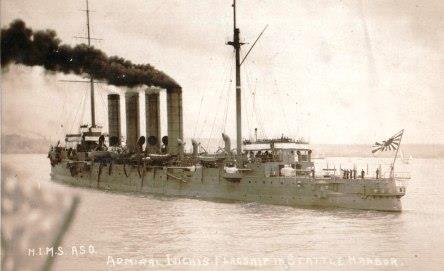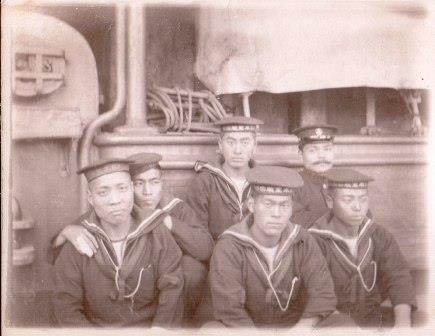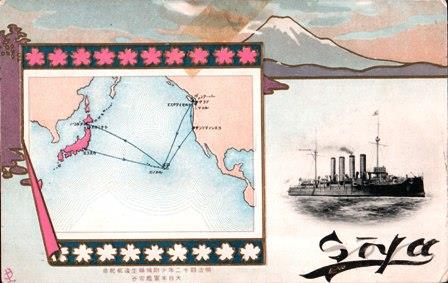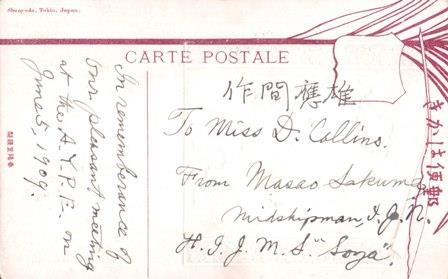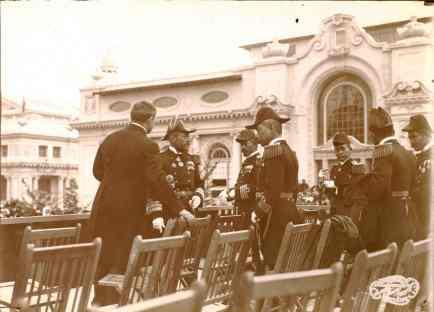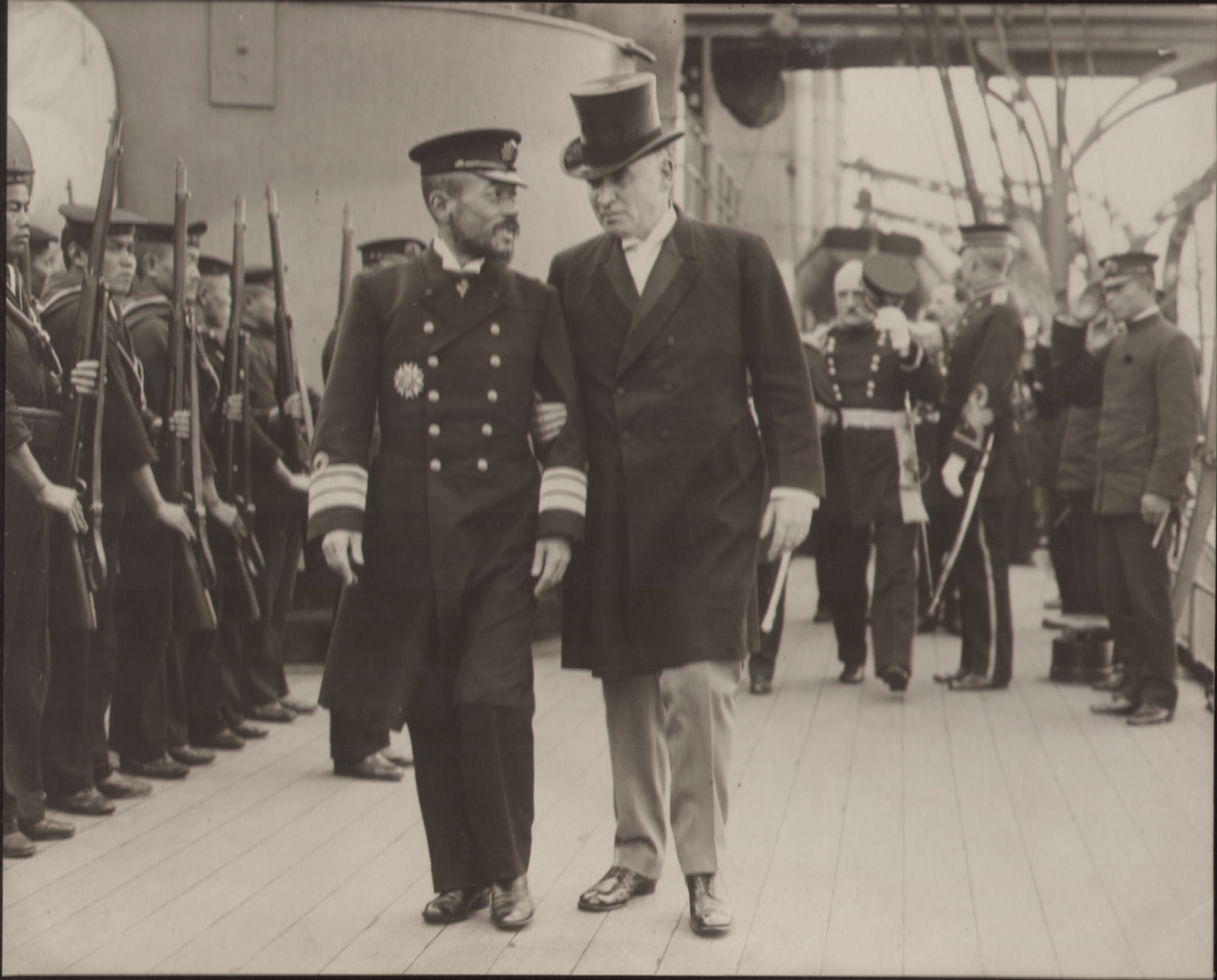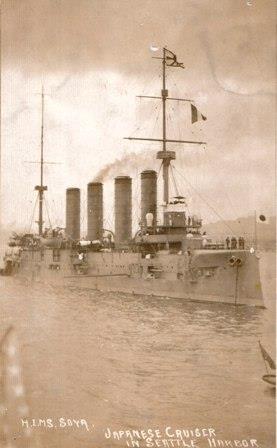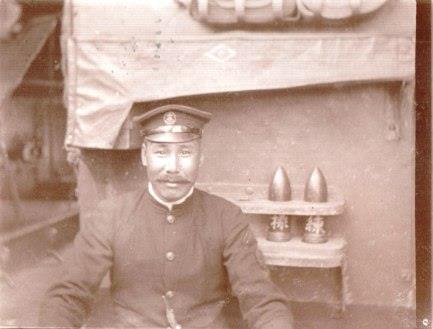Alaska-Yukon-Pacific Exposition - Images of the Fair
With the arrival of two Japanese cruisers and ships from the U.S. Pacific fleet the day before Opening Day, the AYPE engaged another tradition of World’s Fairs and touched on several aspects of naval history, for one of the ships - the Soya - is among the most historically significant and famous warships ever to anchor in Elliot Bay.
In 1904 - 1905 Japan and Russia fought a land and naval war over control of Manchuria and Korea. In this brutal and horrific harbinger of what the twentieth century would bring, Japan surprised and shocked the world with stunning naval victories over the Russians, who sent their Baltic fleet 18,000 miles to do battle. The war was followed with fascination around the world, and many dramatic portrayals were presented, including those in World’s Fair venues in the United States such as at the Jamestown exposition.
Visit of the Japanese Navy
Please note: this page is best viewed with your browser maximized
"H.I.M.S. Aso.. in Seattle's Harbor" Pub. Quaker Drug Co., Seattle
Crewmen serving on Aso or Soya at Seattle, photographer unknown
President Roosevelt helped negotiate a peace, but Japan had asserted herself as a major power in the Pacific and was left with frustration over the settlement. In 1907 Roosevelt used the Jamestown Exposition in Hampton Roads, Virginia, as the launch point for a world tour of the U. S. Navy’s Atlantic Fleet - the famous Great White Fleet. Japan was an important destination and the fleet made an extended stay there, a visit of goodwill as well as a show of strength. The U.S. Navy’s Pacific Fleet participated in ceremonies when the Great White Fleet stopped in California; several Puget Sound ports were also visited.
After the war, Japan salvaged several Russian ships, and used them for cadet officer training in international voyages each summer. In 1909 the cruisers Aso and Soya visited Hawaii, the west coast of the United States, and Canada, touring Puget Sound and timing their visit to arrive before the opening of the AYPE. Cruisers of the Pacific Fleet, painted white as the Great White Fleet had been, came to meet them in Seattle, formally attached to duty at the exposition.
Japanese map postcard of the Soya's 1909 cruise.
Back of the card, sent from a Japanese cadet to a Seattle resident.
The cruisers and Japanese sailors were greeted with great enthusiasm wherever they went during their two week visit. The visit was a source of pride to the local Japanese community who commissioned two steamers to greet them in the harbor when they arrived on the day before the fair opened. The Japanese and American ships saluted each other, and the officers of each navy received each other with ceremony and fanfare. On opening day, the U.S. sailors and cadets marched together in the opening parade, and the officers had places of honor in the opening exercises.
Group of Japanese schoolchildren on board Aso, Seattle pub. in Coast Magazine 11/09
Japanese officers at the opening ceremonies. Photo by F. H. Nowell
The sailors of both navies participated in athletic and sporting events; the Japanese were particularly adept at marksmanship. American civilians and local Japanese toured the ships and officers and cadets were invited to formal dinners parties in the city. Japanese residents showered the sailors with meals and affection. At night hundreds of viewers lined the waterfront to gaze at the ships of both navies outlined with lights. Feelings reached their highest point when the Japanese Admiral Ijichi wished to give a treasured family samurai sword to AYPE official Will H. Parry. Parry did not want to take such a gift, but finally did accept a lovely and valuable sword that was not an heirloom, which he promised to treasure forever.
Newspapers in Japan reported favorably on the cruiser's reception in Tacoma and Seattle, citing it as "unimpeachable evidence of the sincerity of the friendship between the United States and Japan". Admiral Ijichi’s farewell words summed up the feelings that evolved during the cadets’ stay: “The officers and men of the imperial Japanese training squadron feel very grateful for the hospitality so lavishly extended them.. the entire city of Seattle seemed replete with the atmosphere of goodwill and kindness.. the benefit, both intellectual and otherwise, which the entire personnel of the fleet, especially its junior officers and men, have derived.. cannot be too strongly emphasized.”
Image, probably of Gov. Brady of Idaho with Admiral Ijichi of Japan, followed by American officers, aboard the Aso in Seattle, June 2, 1909. Anon.
Published by Quaker Drug Co. Seattle
Crewman of the Soya or Aso, in Seattle June 1909
Although newspapers reported the ships' provenance, little was made of their battle histories. The Aso had been based in Port Arthur, Manchuria, (now Darien) and is believed to have sallied forth and challenged the Japanese fleet early in the war. Her fate was to be sunk by land artillery after the Japanese breached the fortresses protecting Port Arthur. But the Soya was the very famous Variag, the iconic Russian cruiser that took the first action against the Japanese in Chemulpo harbor, Korea (now named Inchon). Caught away from the main fleet by Japan’s surprise launch of the Russo-Japanese war, the Variag battled five Japanese cruisers, and when further punishment and destruction were inevitable, was scuttled rather than surrender its flag. This story of the Variag/Soya is beyond the scope of the AYPE but the Variag and her heroic crew are still celebrated today. Her artifacts and mementos are prominent in museums, monuments and Orthodox churches in Russia, Korea, Japan, Scotland, and the United States. The Variag Story
